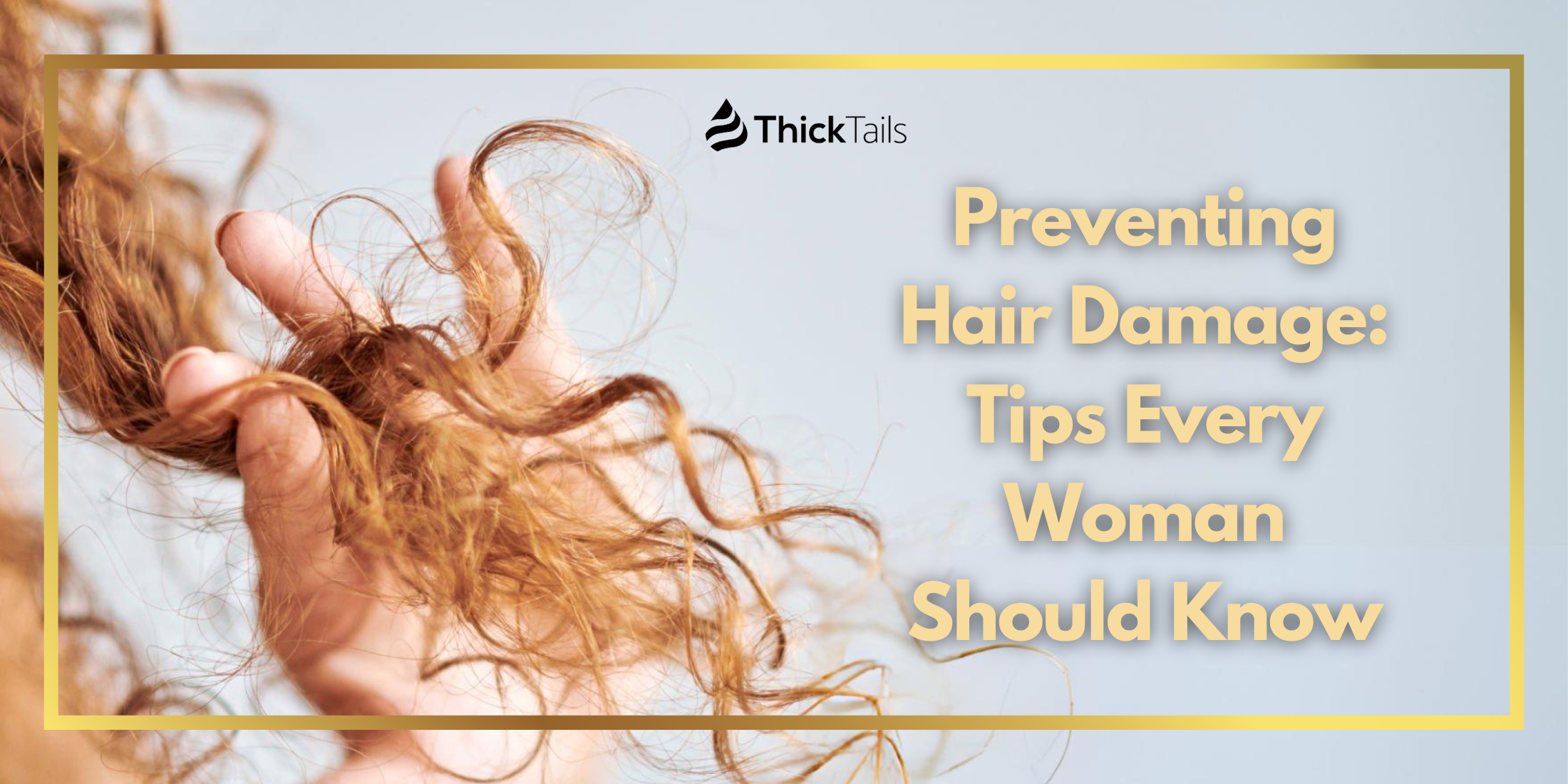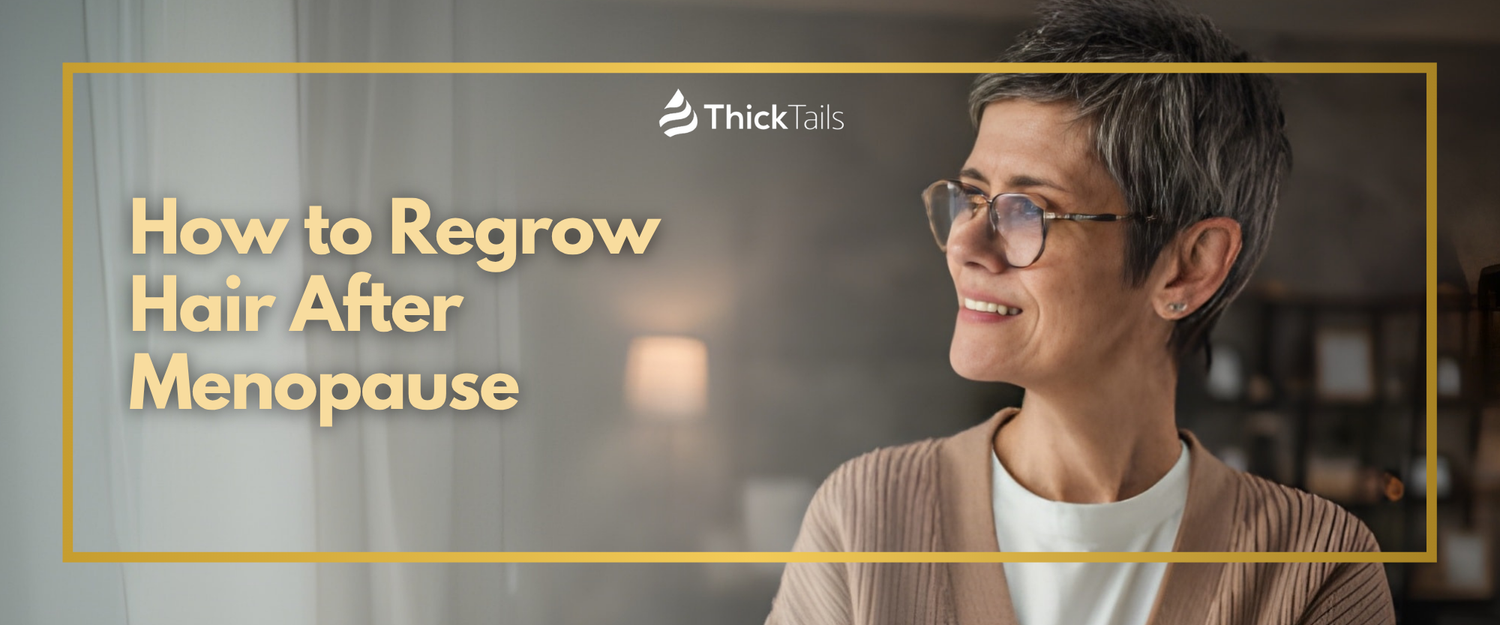As women, our hair is often a large part of our identity and confidence. However, as we go through different phases in life such as menopause, postpartum recovery or increased stress levels, our hair can also face various challenges that may lead to damage. From thinning and shedding to breakage and dryness, these struggles with our tresses can be frustrating and even affect us emotionally. But fear not! With the right knowledge and preventative measures, you can protect your locks from harm. In this blog post, we will dive into common causes of hair damage for women undergoing menopause, postpartum recovery or stress,and provide you with valuable tips on how to keep your strands healthy and strong throughout these transformative stages of life. So let's get started on learning how to prevent hair damage for all the amazing ladies out there!
I. Understanding Common Causes of Hair Damage

Hair is often considered to be one of the most defining characteristics of one's personality. However, maintaining healthy hair is not always an easy feat. One of the most common and frustrating problems faced by many people is hair damage. Whether it's due to heat styling, chemical treatments, or even just everyday wear and tear, damaged hair can be a major concern. Understanding the common causes of hair damage is crucial to prevent further harm. Fortunately, there are several ways to revitalize damaged hair and restore it to a healthier, more vibrant state. With a little bit of patience and care, anyone can achieve beautiful, healthy hair.
A. Heat Styling: The Impact of Frequent Use of Hair Dryers, Curling Irons, and Straighteners
When it comes to achieving a fresh, stylish look, many of us turn to heat styling tools like hair dryers, curling irons, and straighteners. However, frequent use of these tools can have a significant impact on the health and appearance of our hair. Heat styling can weaken and damage the hair cuticle, leading to split ends, breakage, and overall dryness. To minimize the negative effects of heat styling, it's important to use protective products, such as heat protectant sprays or serums, and to limit the use of heat styling tools as much as possible. By taking care of our hair and understanding the impact of frequent heat styling, we can achieve the desired look without sacrificing the health of our tresses.
B. Chemical Treatments: Risks of Coloring, Perming, and Relaxing Hair
Chemical treatments like coloring, perming, and relaxing have become quite popular over the years due to their ability to transform hair texture, color, and appearance. However, these treatments come with a cost - hair damage. Whether you want to dye your hair platinum blonde or get a perm to achieve those luscious curls, it's essential to understand the risks involved. The chemicals used in these procedures can weaken your hair, making it more prone to split ends, breakage, and even hair loss. It's especially important to take caution if you have sensitive or damaged hair. However, with the right preparation, care, and guidance from a professional stylist, you can minimize the risks and enjoy a beautiful healthy head of hair.
C. Environmental Factors: Sun Exposure, Pollution, and Chlorine Damage
The factors that contribute to hair damage are not always obvious, but it's important to be aware of them to keep hair looking and feeling healthy. Sun exposure can cause not only dryness, but also physical damage like split ends. Pollution can also take a toll on hair, throwing it out of balance and leaving it looking and feeling dull. Chlorine damage is another culprit, often causing breakage and a loss of elasticity. Protecting hair from these environmental factors is key to preventing damage and keeping hair looking its best.
II. Best Practices for Preventing Hair Damage
Hair damage is a universal problem that affects everyone at some point in their lives. The reasons for it can be anything from environmental factors to improper hair care routines. Whatever the cause might be, it's essential to prevent hair damage to maintain healthy and lustrous hair. The best practices for doing so involve adopting a gentle hair care routine that includes using the right products for your hair type, minimizing heat exposure, and avoiding tight hairstyles that put unnecessary tension on your strands. Regularly trimming your hair, keeping it moisturized, and nourished with natural oils can also go a long way in keeping hair damage at bay. By following these best practices, you can ensure that your hair stays beautiful and healthy for years to come.
A. Protective Styling: Low-Tension Hairstyles to Minimize Breakage
Hair damage is a common issue faced by many individuals, especially those with textured hair. However, there is hope for those who want to protect their strands while still looking stylish. Protective styling, which involves low-tension hairstyles, is a great solution for minimizing breakage. By choosing styles that keep the hair close to the scalp and reduce manipulation, you can help prevent damage and promote healthy hair growth. From braids to twists to buns, there are countless options for protective styles that can fit any personal style. So next time you want to switch up your look, consider a protective style to keep your locks safe and strong!
B. Proper Washing Techniques: Choosing the Right Shampoo and Conditioner
Proper washing techniques involve more than just lathering up your hair with any old shampoo and conditioner. In fact, choosing the right products could make all the difference in the world when it comes to the health and shine of your hair. With so many options on the market today, it can be challenging to know which ones are truly effective and beneficial. Picking the wrong products could lead to hair damage over time. So, take the time to research and choose the best options for your hair type, whether it is dry, oily, or somewhere in between. Using the right shampoo and conditioner might seem like a small step, but it could make a massive impact on the overall appearance and health of your hair.
C. Nourishing Treatments: The Role of Serums, Masks, and Leave-In Conditioners
In today's world, hair damage has become a common issue for many people. The use of hair styling tools, environmental factors, and chemical treatments can all contribute to weakened hair strands. Fortunately, there are nourishing treatments available to help combat this problem. One such treatment is hair serum, which can hydrate and strengthen your hair. Another option is a hair mask, which can provide deep conditioning and repair damaged hair. Finally, leave-in conditioners are a great way to protect your hair from environmental stressors and retain moisture. In this way, serums, masks, and leave-in conditioners all play a vital role in keeping your hair healthy and radiant. By incorporating these nourishing treatments into your hair care routine, you can ensure that your hair is regularly receiving the necessary nutrients to promote its growth and strength.
III. Lifestyle Changes to Support Hair Health

Hair is a major part of our appearance and a reflection of our overall health. It's important to understand that your lifestyle habits play a significant role in the health of your hair. Making the proper lifestyle changes is important to maintain healthy hair. Simple lifestyle changes such as managing your stress, eating a well-balanced diet, getting sufficient exercise, and avoiding harsh chemicals can make a significant difference in the strength and condition of your hair. These lifestyle changes not only improve your hair health but they also promote overall physical and mental wellness. By altering your lifestyle in positive ways, you can have the hair you’ve always desired.
A. Balanced Diet: Essential Vitamins and Minerals for Stronger Hair
Hair damage is a serious issue that affects many people, and it can lead to hair breakage, thinning, and even hair loss. One of the best ways to combat this issue is by maintaining a balanced diet that contains essential vitamins and minerals that can help to strengthen your hair. It is important to note that while hair supplements can be helpful, it is best to get your vitamins from your food sources. Some of the most important vitamins and minerals include biotin, vitamin C, iron, zinc, and vitamin A. By incorporating more nutrient-rich foods into your diet, you can ensure that your hair stays healthy and strong.
B. Hydration: The Importance of Drinking Enough Water for Hair Moisture
Many people don't realize the importance of staying hydrated when it comes to their hair. Not drinking enough water can lead to hair damage and dryness, which can result in split ends and breakage. When dehydrated, our body prioritizes essential organs over non-essential ones, like hair follicles. This means that inadequate water intake can lead to undernourished hair and a lack of natural hair oils. Drinking enough water each day is crucial for maintaining good hair health. So, next time you're considering skipping that glass of water, remember how important hydration is for keeping your hair moisturized and healthy!
C. Stress Management: How Reducing Stress Can Promote Hair Growth and Prevent Damage
Stress can have a detrimental effect on not only our mental health but also our physical appearance, specifically our hair. Hair damage as a result of stress can range from hair loss to thinning and breakage. But fear not, because reducing stress can actually promote hair growth and prevent further damage. Studies have shown that stress-reducing activities like meditation and exercise can improve blood circulation to the scalp, which in turn promotes healthier hair growth. Additionally, reducing stress can also prevent hair damage from daily wear and tear, such as excessive heat styling or harsh chemicals. So take a deep breath, find ways to manage your stress levels, and say hello to healthier hair.
It's no secret that our hair is one of the most important features that contribute to our overall appearance. As we've explored in this post, everyday habits such as heat styling and chemical treatments can cause damage to our precious locks. But don't panic just yet, because armed with the knowledge of these common causes, we can now make conscious choices to prevent further damage. From opting for low-tension hairstyles to nourishing treatments and using the right haircare products, we have a variety of methods at our disposal. Additionally, making lifestyle changes like maintaining a balanced diet, staying hydrated and managing stress can greatly benefit our hair health too. Remember that healthy and beautiful hair requires both internal and external care. So let's show our locks some love and make these changes today! By incorporating these practices into our routine, we not only protect our hair from harm but also promote strong, silky strands for years to come. Because when it comes to hair care, prevention is definitely better than cure. Thank you for joining me on this journey towards healthier and happier tresses!







